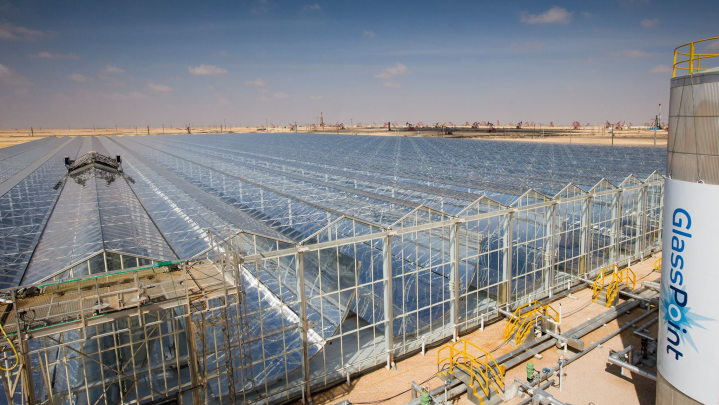
The solar park has been backed and funded by California-based company GlassPoint Solar Inc. in partnership with Petroleum Development Oman, Royal Dutch Shell Plc, Total SA, and the government of Oman. The powerful groups behind the project serve not only to justify its enormous size — their magnitude also supports the groundbreaking nature of the renewable energy project. Never before has solar power been used to fuel commercial oil production at this scale.
Related: BP reaches settlement, agrees to pay $18.7 billion in damages for 2010 oil spill
GlassPoint Solar piloted the technology in smaller oil fields, developing and refining the process by which solar power is used to heat sub-surface strata, increasing the efficiency of bringing heavy, dense crude oil to surface-level production plants. The oil industry is of course an enormous player in international economics, and as resources become harder to access either physically or politically, new methods are being developed to keep the oil flowing.
Many of the countries with crude oil resources report already having pumped the resources that lie closest to the surface. Reaching and releasing heavier varieties from their stores in the earth’s deeper layers requires more costly processes. As a result, 60 percent of an oil field’s budget could easily be funneled directly into Enhanced Oil Recovery, since five barrels are consumed to steam up one barrel of heavy crude.
Oil resources are limited, and burning five barrels for the sake of collecting one surplus barrel of heavy crude may cost as much in opportunity as it does in direct financials — “Oman could be selling that gas,” said Rod MacGregor, CEO at GlassPoint.
This particular application in Oman could set the standard for medium-sized oilfields around the world, specifically those that require between one and three gigawatts of solar thermal power to generate sufficient steam to reach lower sections of crude oil.
Larger oilfields could require up to 30 gigawatts of solar thermal, and GlassPoint is also branching out beyond scalable Enhanced Oil Recovery applications. Other oil industry processes could benefit from solar thermal power, including the desalination and desulfurization processes that purify water locally at plants.


